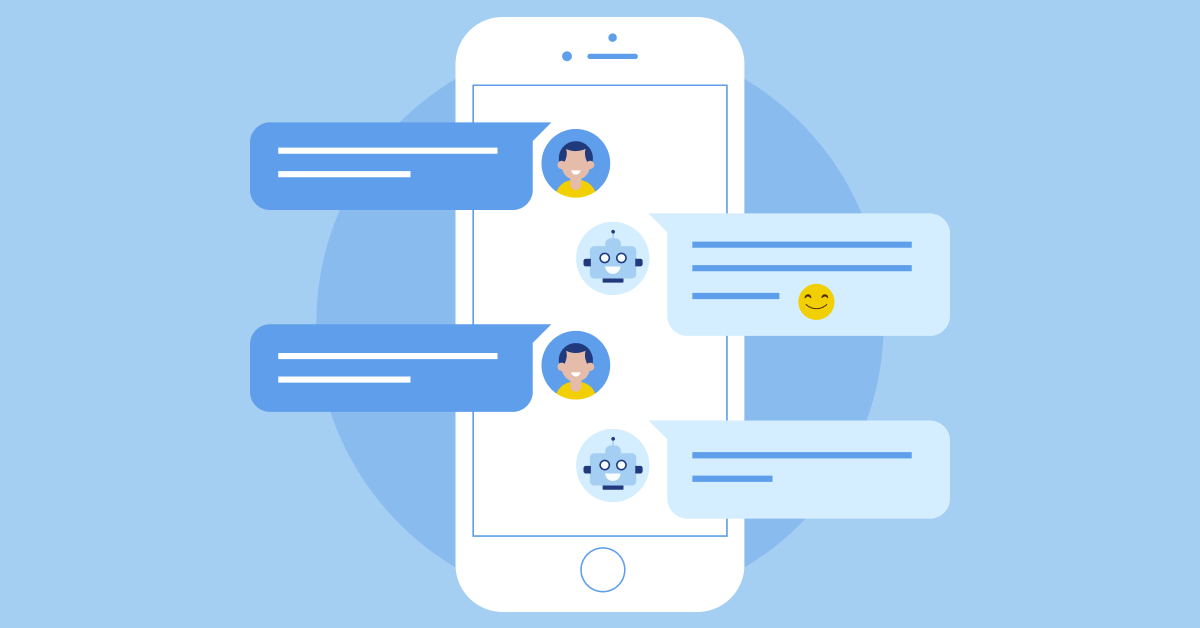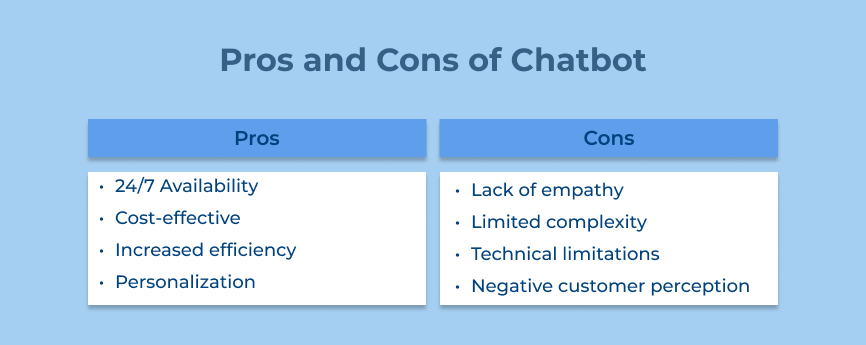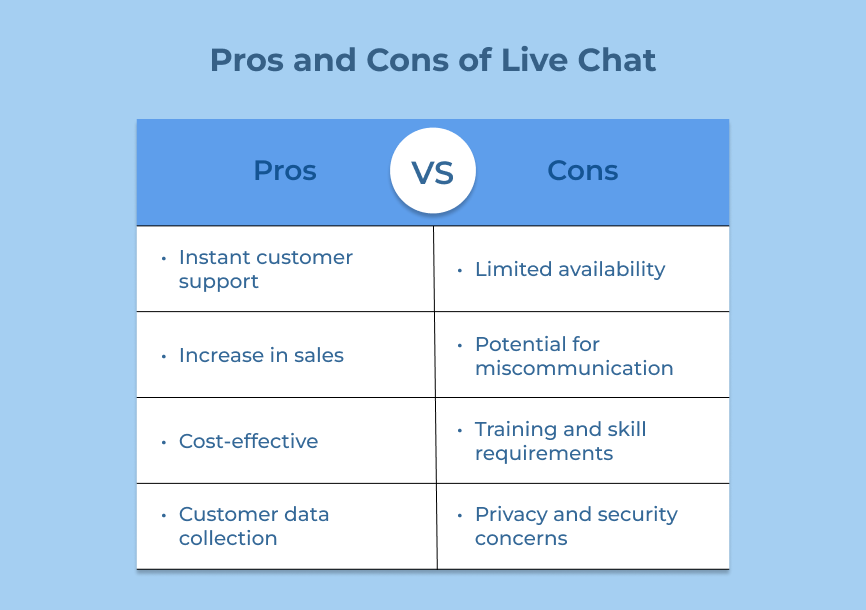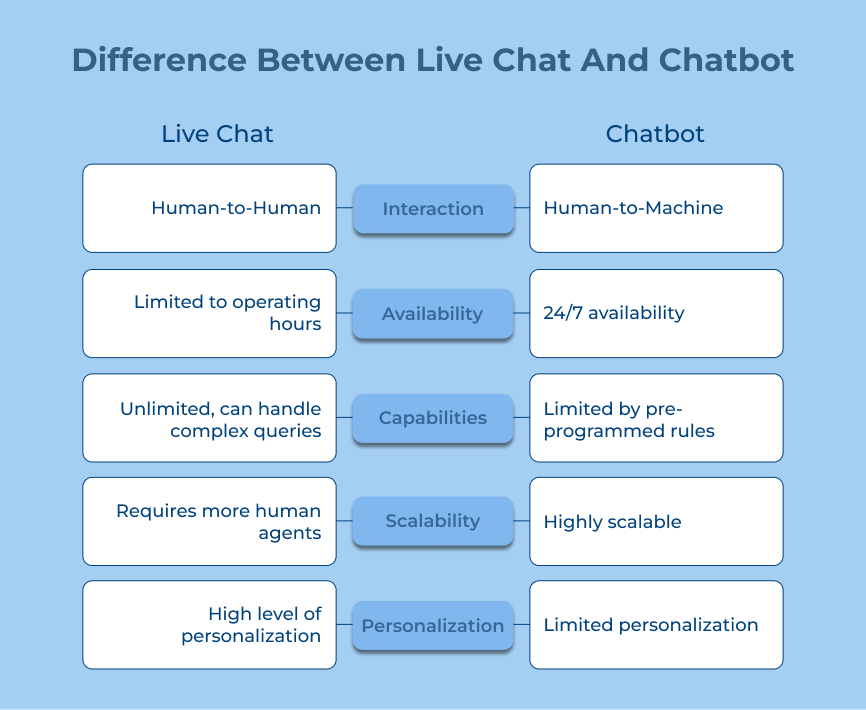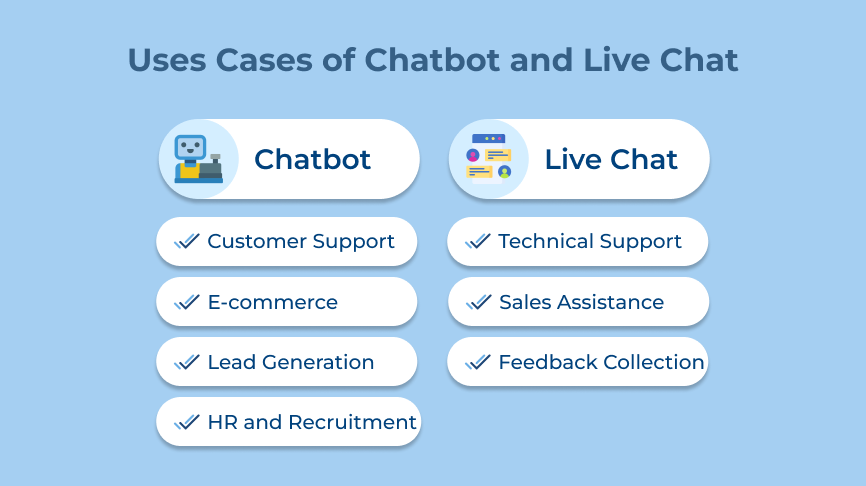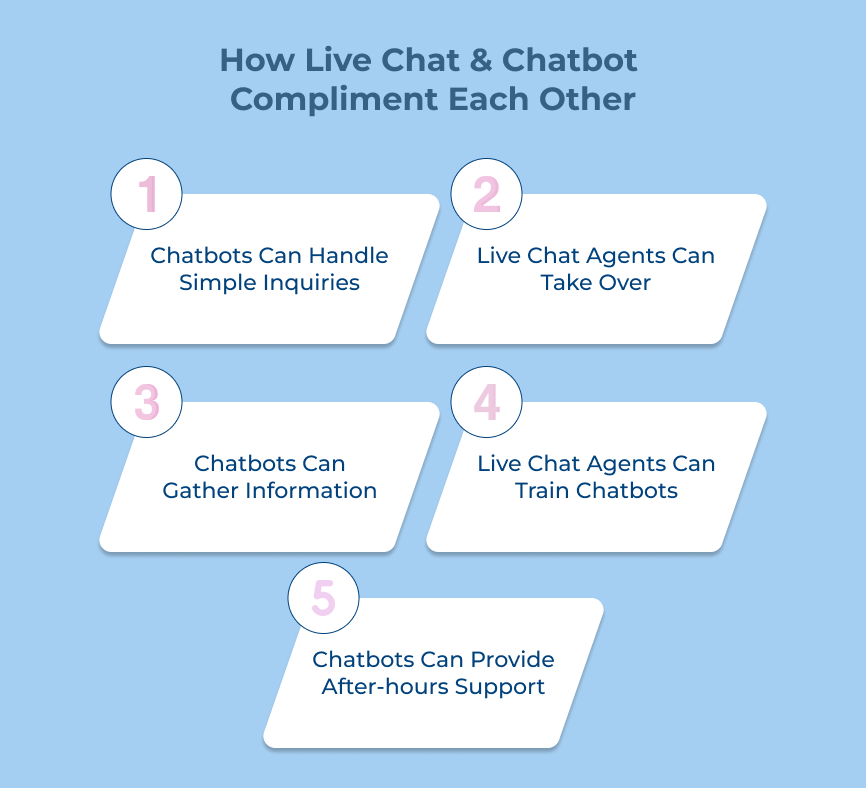1. 24/7 Support
Live chat support involves having real customer service representatives available to respond to inquiries and provide assistance around the clock. The human touch can lead to more personalized interactions and a higher level of customer satisfaction.
Chatbots are AI-powered tools designed to simulate conversations with users. Chatbots can be available 24/7 and provide instant answers but they may lack the problem-solving abilities of a human agent. It can lead to frustration for customers who have complex issues that require a more nuanced approach.
Key takeaways:
- The business that wishes to provide 24/7 support a chatbot is the best support.
- A business that wishes to provide more personalized support instead of 24/7 live chat is the best option.
2. Implementation Time and Ease of Use
Live chat typically requires less setup time as it involves human agents actively responding to customer inquiries in real time. Which makes it easy to integrate into existing systems and provides a personalized touch to customer interactions.
Chatbots require more initial setup time as they need to be programmed and trained to accurately handle customer queries. Once set up, chatbots can operate 24/7 without the need for human intervention, thus saving time in the long run.
Key takeaways:
- Live chat may be the better option for a business looking to offer quick implementation and ease of use. It can be run in a short amount of time. Live chat is straightforward for both customers and employees to use.
- Chatbots may require a more upfront investment in terms of time and resources. It can provide a seamless and efficient customer service experience once properly implemented.
3. Handling Complex Issues
Live chat allows for real-time communication with a human agent who can provide personalized responses to complex queries. Human agents can understand nuances, emotions and unique situations. It makes them better equipped to handle intricate issues effectively.
Chatbots are automated tools that use algorithms to respond based on pre-programmed information. They may struggle with complex issues that require empathy, creativity and critical thinking while chatbots can handle basic inquiries efficiently.
Key takeaways:
- Live chat is the better option if the business is looking to handle complex queries effectively. Human agents can offer a higher level of personalized service and problem-solving skills that chatbots may lack.
- Incorporating chatbots as a supplementary tool for handling simple inquiries can still provide value and efficiency to the customer service operations.
4. Instant Response
Live chat involves a customer service representative communicating directly with the customer and providing immediate responses to inquiries or issues. The personal touch can lead to higher customer satisfaction as customers feel valued.
Chatbots use artificial intelligence to communicate with customers, providing instant responses based on pre-programmed information. They may lack the personalization and empathy that live chat can offer while chatbots can handle a high volume of inquiries simultaneously.
Key takeaways:
- When it comes to instant response, live chat is better suited for handling complex or sensitive inquiries that require human intervention.
- Chatbots excel in providing quick and consistent responses to common questions or tasks.
5. Personalized Responses
Live chat involves a real person responding to customer inquiries in real time, providing a human touch and tailored responses to each customer. It can lead to more personalized interactions and a higher level of customer satisfaction.
Chatbots are automated tools that can respond to customers based on pre-set responses and algorithms. Chatbots can provide instant responses 24/7 and handle a high volume of inquiries efficiently while they may lack the personal touch of live chat.
Key takeaways:
- Live chat is typically better suited for businesses that prioritize human interaction and personalized customer service.
- Chatbots may be more suitable for businesses that need to handle a large volume of inquiries quickly and efficiently, even if the responses are less personalized.
6. Cost-Efficient
Live chat systems typically require more manpower to operate effectively, as they rely on human agents to respond to customer inquiries in real time. It can increase operational costs for businesses, especially if they need to hire and train additional staff to handle the volume of incoming messages.
Chatbots are automated systems that can handle a large number of customer interactions simultaneously without the need for human intervention. It can significantly reduce labor costs for businesses, making chatbots a more cost-efficient option for handling customer inquiries.
Key takeaways:
- Chatbots have the edge over live chat systems due to their ability to handle a higher volume of inquiries with minimal human involvement which leads to reduced cost.
- Chatbots can provide 24/7 support, further optimizing operational costs for businesses.,
7. Agent Productivity
Live chat allows agents to engage with customers in real-time, providing personalized responses and addressing complex queries effectively. It can lead to higher customer satisfaction levels, but it also requires more time and resources from agents.
Chatbots are AI-powered tools that can handle a large volume of inquiries simultaneously, freeing up agents to focus on more complex tasks. Chatbots can significantly increase agent productivity by automating routine inquiries.
Key takeaways:
- The businesses that are willing to increase agent productivity then implementing a chatbot is the best option. It can handle a high volume of tasks helping agents to focus on other complex issues.
- The businesses that were to provide personalized responses then Live chat is better suited as it can handle complex tasks.
Chatbot and Live Chat: Ways to Integrate
Let’s go through the various steps you can take to integrate chatbots and live chat to revolutionize your customer service experience.
A. Add Live Chat
Live chat is becoming an increasingly popular tool for website owners to enhance customer engagement. A business looking to add live chat and chatbots to the website, here are some steps to help get started:
1. Choose the Right Live Chat Software
There are many live chat software options available, so it’s important to choose one that fits the business needs and budget. Some popular live chat software options include Intercom, LiveChat and Zendesk Chat. Make sure to consider factors such as ease of use, features and customer support when choosing a live chat software.
2. Sign Up and Set Up your Account
Once the business has chosen a live chat software, sign up for an account and follow the setup instructions provided by the software provider. It usually involves adding a code snippet to the website to integrate the live chat functionality.
3. Customize the Chat Widget
Customize the chat widget to match the website’s branding and design. The business can usually customize aspects such as colors, messaging and placement on the website to make it more visually appealing.
4. Train your Team
Train the team of customer service representatives who will be using the live chat tool. Make sure to provide them with training on how to use the software effectively and how to provide excellent customer service through live chat.
5. Start Engaging with Visitors
Once everything is set up and the team is trained, start engaging with visitors on the website through live chat. Be proactive in reaching out to visitors, answering their questions and providing assistance in real time.
B. Add Chatbot
The business may also want to consider adding chatbots to the website. Here are some steps to add chatbots to the website:
1. Choose a Chatbot Platform
There are many chatbot platforms available such as Chatfuel, ManyChat and Botsify. Choose a platform that fits the business needs and budget. Set a budget for the business along with the features the business wants in the chatbot.
2. Create your Chatbot
Use the chatbot platform to create a chatbot that can handle common customer queries and tasks. It may involve setting up predefined responses, integrating with other tools for more functionality and testing the chatbot to ensure it works smoothly.
3. Integrate the Chatbot with Your Website
Once the chatbot is ready, integrate it with the website by adding a code snippet or using a plugin provided by the chatbot platform. Follow the integration process to do it easily without any blockage.
4. Test and Optimize
Test the chatbot to make sure it is functioning correctly and optimize its responses based on user feedback. Continuously monitor its performance and make improvements as needed. Customer feedback is essential for optimization. Analyze their feedback to understand the areas of improvement.
Chatbot vs Live chat: Use cases
Check out the scenarios where chatbots shine and where live chat outperforms, helping you determine the best fit for your customer service strategy.
